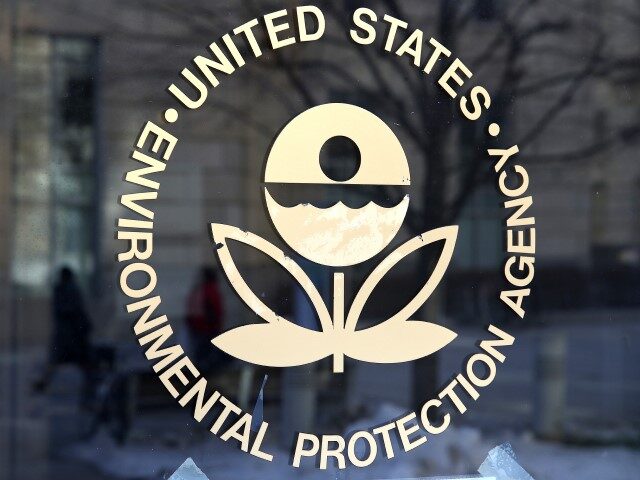WASHINGTON, DC – Joe Biden’s Environmental Protection Agency (EPA) likely violated federal law with its ozone plan, the Supreme Court held on Thursday, granting a stay requested by Ohio and a coalition of states.
“The Clean Air Act envisions States and the federal government working together to improve air quality. Under that law’s terms, States bear primary responsibility for developing plans to achieve air-quality goals,” Justice Neil Gorsuch began for the majority. “Should a State fail to prepare a legally compliant plan, however, the federal government may sometimes step in and assume that authority for itself.”
“Here, the federal government announced its intention to reject over 20 States’ plans for controlling ozone pollution,” Gorsuch continued in the 5-4 decision. “In their place, the government sought to impose a single, uniform federal plan [called a FIP]. This litigation concerns whether, in adopting that plan, the federal government complied with the terms of the Act.”
“Because air currents can carry pollution across state borders, emissions in upwind States sometimes affect air quality in downwind States. To address that externality problem, under the Act’s Good Neighbor Provision,” he explained, “state plans must prohibit emissions in amounts which will . . . contribute significantly to nonattainment in, or interfere with maintenance by, any other State of the relevant air-quality standard.”
“Because the States bear primary responsibility for developing compliance plans, EPA has no authority to question the wisdom of a State’s choices of emission limitations,” the majority held, quoting precedent. “So long as a SIP [state plan] satisfies the applicable requirements of the Act, including the Good Neighbor Provision, EPA shall approve it within 18 months of its submission.”
“Rather than continue to encourage flexibility and different state approaches, EPA now apparently took the view that effective policy solutions to the problem of interstate ozone transport demanded that kind of uniform framework and nationwide consistency,” the majority observed.
The court then considered the impact on both sides of issuing a stay to block EPA’s plan while this lawsuit continues.
Gorsuch wrote:
On one side of the ledger, the federal government points to the air-quality benefits its FIP offers downwind States. On the other side, the States observe that a FIP issued unlawfully (as they contend this one was) necessarily impairs their sovereign interests in regulating their own industries and citizens—interests the Act expressly recognizes.
“The States and the private applicants also stress that complying with the FIP during the pendency of this litigation would require them to incur hundreds of millions, if not billions of dollars,” he added. “Those costs, the applicants note, are nonrecoverable.”
The majority then delved into the relevant law – called the Administrative Procedure Act (APA) – that Ohio argued EPA violated with its plan. One way an agency violates the APA is if the agency’s action is arbitrary or capricious.
“An agency action qualifies as arbitrary or capricious if it is not reasonable and reasonably explained,” the court began, quoting a line of longstanding precedents. A court also “must ensure, among other things, that the agency has offered a satisfactory explanation for its action, including a rational connection between the facts found and the choice made,” and cannot ignore “an important aspect of the problem.”
“We agree with the applicants that EPA’s final FIP likely runs afoul of these long-settled standards,” the majority ruled. “The problem stems from the way EPA chose to determine which emissions contributed significantly to downwind States’ difficulty meeting national ozone standards.”
“Although commenters posed this concern to EPA during the notice and comment period, EPA offered no reasoned response,” the court determined, and continued:
Indeed, at argument the government acknowledged that it could not represent with certainty whether the cost-effectiveness analysis it performed collectively for 23 States would yield the same results and command the same emissions-control measures if conducted for, say, just one State.
“With the government’s theories unavailing, the dissent advances others of its own,” the majority wrote, rebutting the points raised in the case’s dissenting opinion. “It begins by suggesting that the problem the applicants raise was not important enough to warrant a reasoned reply from the agency because the methodology EPA employed in its FIP appears not to depend on the number of covered States.”
“The trouble is, if the government had arguments along these lines, it did not make them,” the majority reasoned in rejecting that point. “It did not despite its ample resources and voluminous briefing.”
“If anything, we see one reason for caution after another,” Gorsuch adds, discussing five deficiencies with the dissenting justices’ arguments. “With so many reasons for caution, we think sticking to our normal course of declining to consider forfeited arguments the right course here.”
Justice Amy Coney Barrett wrote the dissent, joined by Sonia Sotomayor, Elena Kagan, and Ketanji Brown Jackson.
The four consolidated applications were decided under the name Ohio v. EPA, 23A49 in the Supreme Court of the United States.
Breitbart News senior legal contributor Ken Klukowski is a lawyer who served in the White House and Justice Department. Follow him on X (formerly Twitter) @kenklukowski.

COMMENTS
Please let us know if you're having issues with commenting.